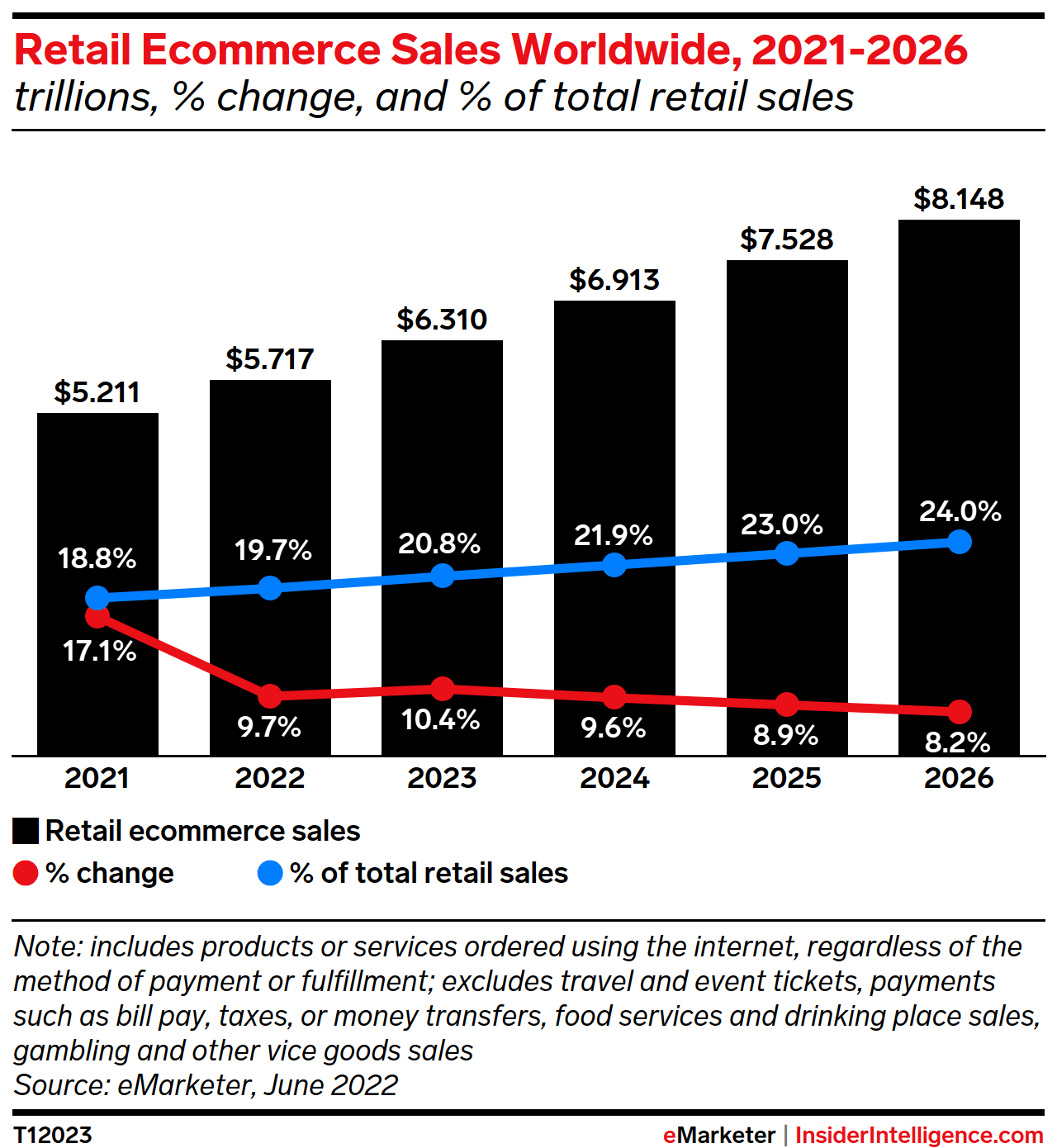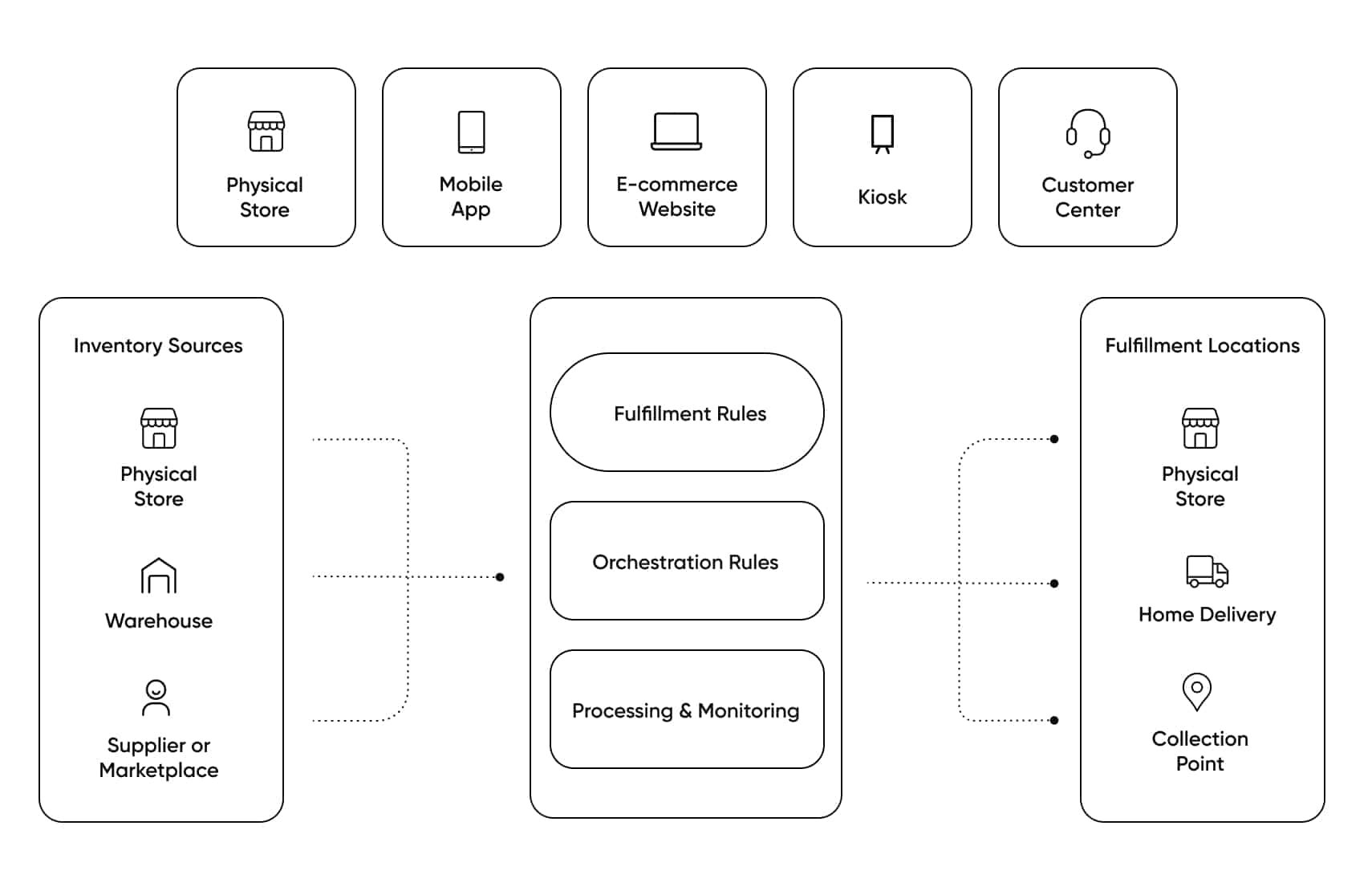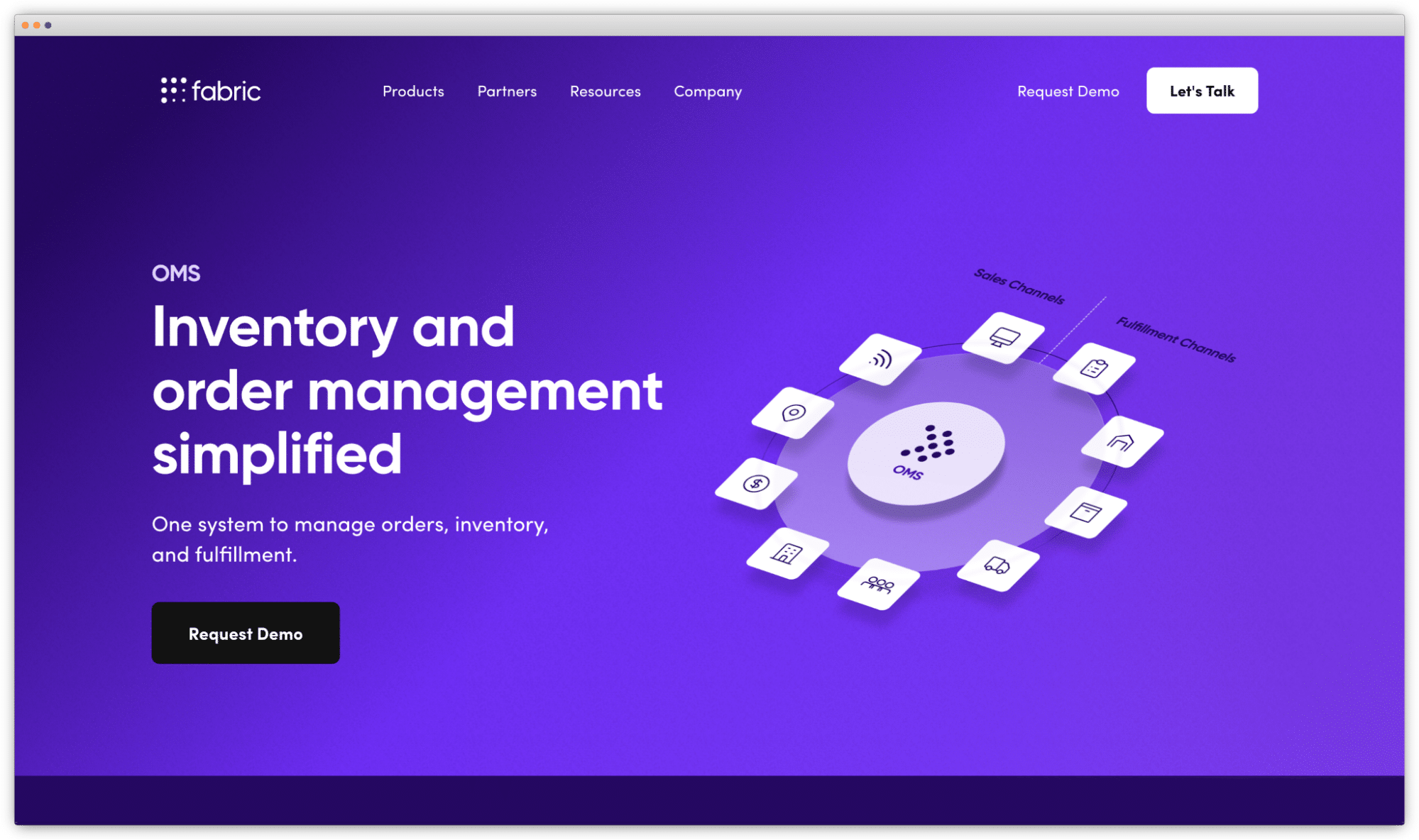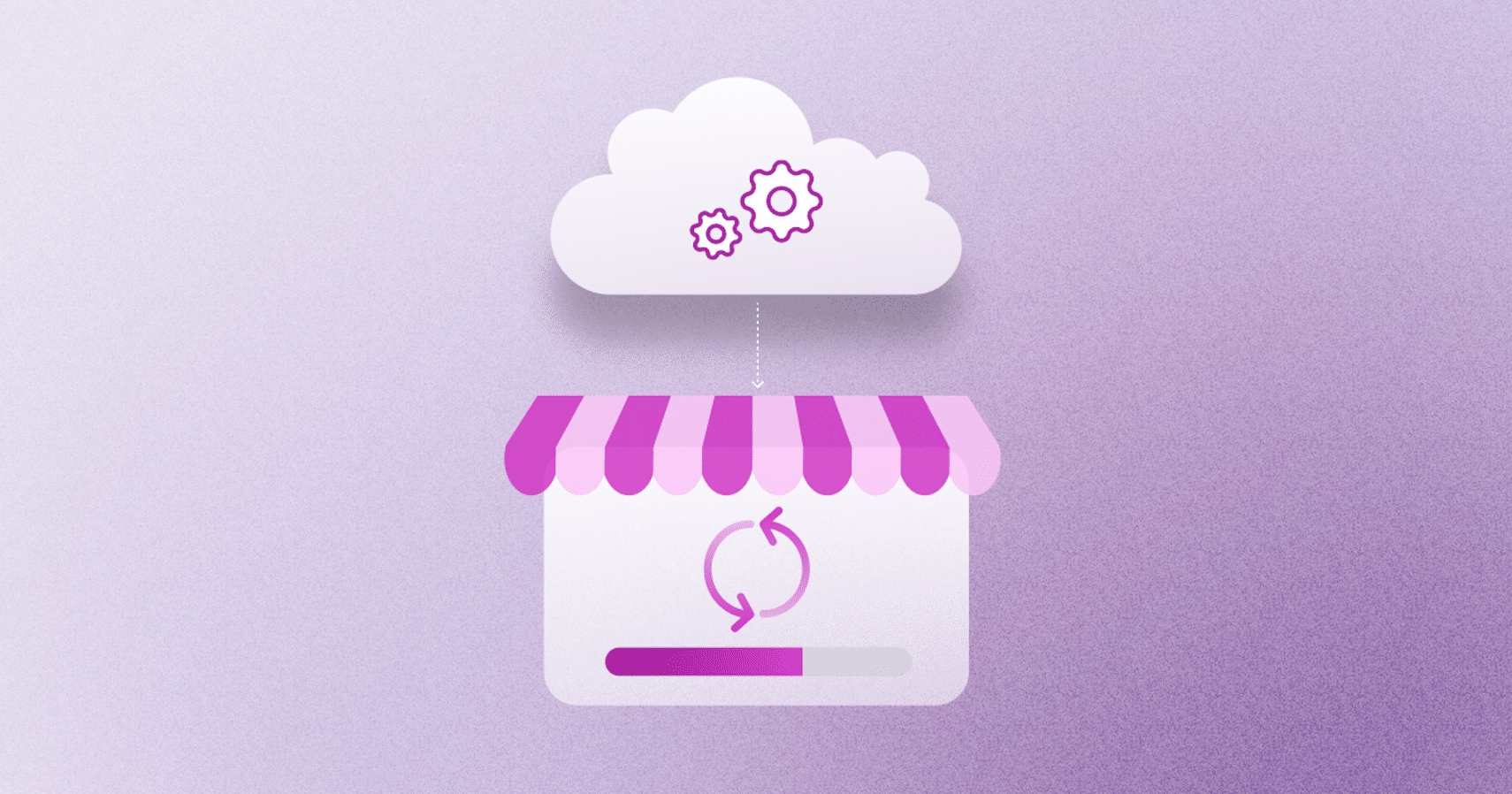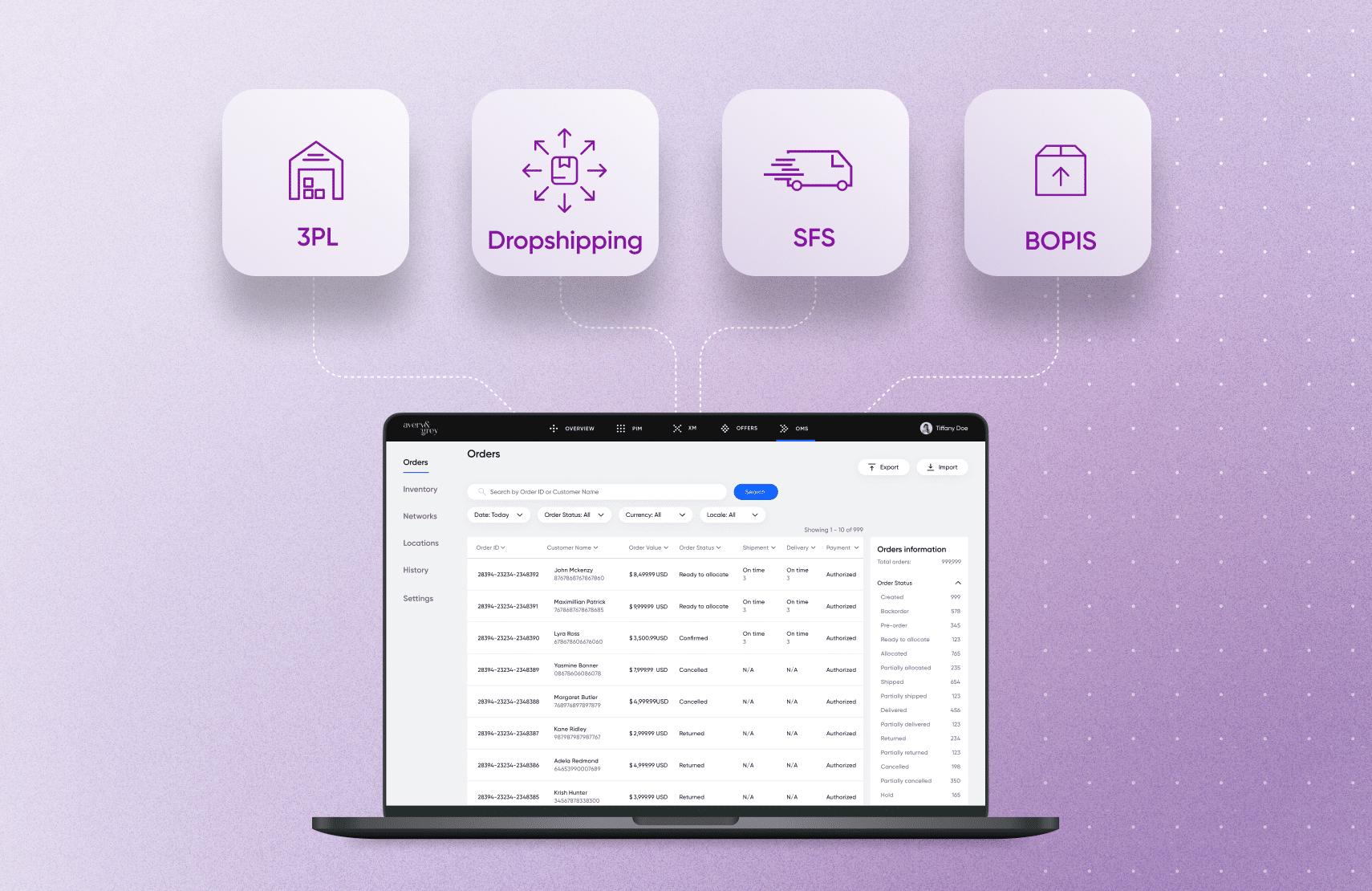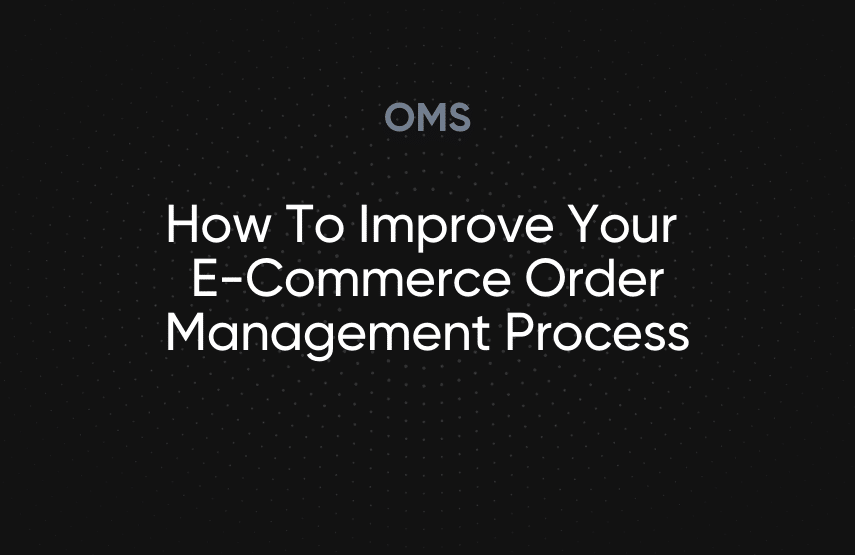What is Order Management? The Enterprise Retailer’s Guide to Processing, Fulfillment, and More
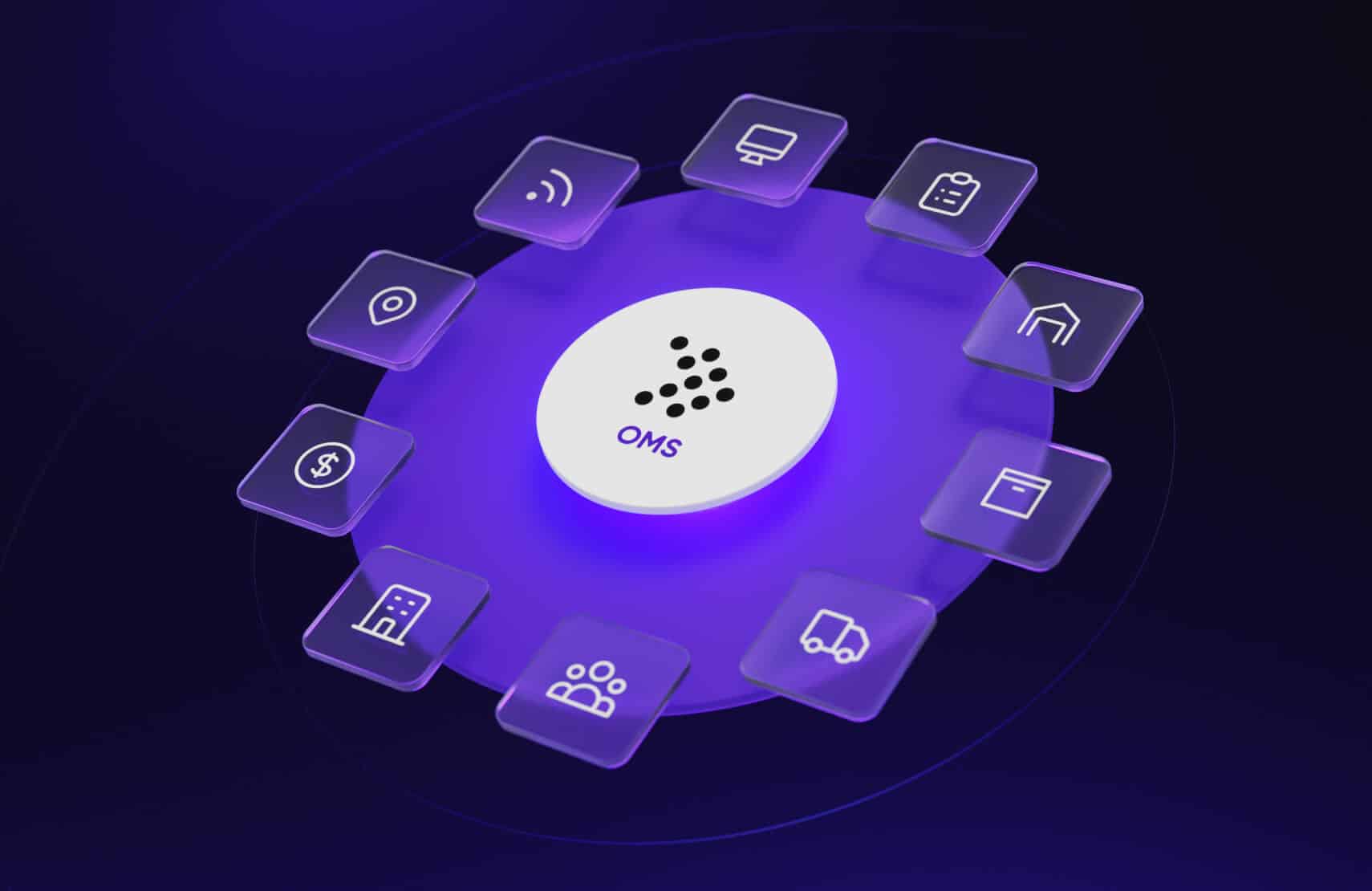
Enterprise order management is a critical process for efficiently handling and fulfilling customer orders in a complex business environment.
Effective order management involves integrating and streamlining various systems and processes to ensure accurate inventory visibility, order processing, and timely fulfillment.
fabric OMS is a distributed order management (DOM) system that is purpose-built for enterprise retail brands to help deliver superior fulfillment experiences to their customers.
E-commerce is here to stay. The digital marketplace continues to reshape the retail landscape, offering unparalleled convenience and access to a global customer base. In 2022, US e-commerce sales topped $1 trillion, while global e-commerce sales soared past $5.7 trillion. According to Insider Intelligence, 24% of retail purchases are expected to take place online by 2026.
However, while global e-commerce sales are growing at an accelerated pace, the traditional approach to order management has not kept up with the evolving needs and expectations of modern customers. A recent survey found that 73% of consumers have experienced a delivery failure and the top issues cited were late delivery, delivery not arriving when expected, and length of time to make delivery. According to another survey, 85% of online shoppers said that a poor delivery experience would prevent them from ordering from that online retailer again.
That’s where modern order management comes into play. With the right combination of technology and strategy, enterprise retailers can address these challenges head-on, and deliver seamless and efficient order processing, fulfillment, and delivery experiences that align with the demands of today’s consumers. In this guide, you’ll learn:
- What order management is
- Why it’s a critical piece of modern e-commerce strategy
- How an order management system (OMS) can uplevel your operations
- Which OMS platforms are built to serve enterprise retailers
Let’s get started.
What is Order Management?
Order management is the process of efficiently handling and fulfilling customer orders from start to finish. The primary goal of order management is to ensure accurate and timely order processing, which involves streamlining everything from inventory management to payment capture to shipping coordination.
For large-scale e-commerce enterprises with complex operations, order management is a critical piece of the puzzle. In addition to managing orders across multiple channels and touchpoints, enterprise-level order management involves various aspects of order processing for complex operations, including inventory management, advanced order routing, and omnichannel fulfillment. It enables real-time visibility into the end-to-end order process and helps businesses cut fulfillment times and costs without compromising the customer experience.
What is an order management system (OMS)?
An order management system (OMS) is a software solution that automates and facilitates each step of the order management process.
An OMS centralizes order capture, inventory management, shipping, and logistics so retailers and brands have a comprehensive picture of their operations. Modern order management systems can integrate with e-commerce platforms, marketplaces, payment gateways, customer relationship management systems (CRMs), and enterprise resource planning systems (ERPs) to enable seamless data flow and reduce manual interventions.
A distributed order management (DOM) system takes order management a step further, leveraging order fulfillment logic (OFL), or logic-based rules, to automate, orchestrate, and optimize order routing and omnichannel order fulfillment.
With order management software in place, e-commerce companies can automate processes and gain valuable insights to increase efficiency and enhance the customer experience as they scale.
Let’s review some of the hallmarks of effective order management.
Key Elements of Order Management for Enterprises
Order processing
Order processing refers to the series of activities involved in receiving, verifying, and fulfilling customer orders. It starts the moment a customer places an order. For example, the customer’s payment might be validated via a payment gateway like Stripe, Square, or PayPal. Then, the order details are routed to a fulfillment location, where the order is picked, packed, and either prepared for pickup or shipped to the customer. Order processing ensures that the correct items are available, accurately packed, and dispatched to the customer’s preferred location within the specified timeframe.
Omnichannel order fulfillment
Omnichannel fulfillment refers to the strategy and process of fulfilling customer orders seamlessly across multiple sales channels. It involves integrating and synchronizing inventory, order management, and fulfillment operations, and enables retailers to offer various fulfillment options such as in-store pickup, ship-from-store, or direct-to-home delivery. Customers can select their preferred method of receiving their purchases and transition between different channels while receiving consistent service and access to inventory.
To learn more, check out our article on omnichannel fulfillment:
Inventory management
E-commerce enterprises store and manage inventory. This includes on-shelf, in-transit, and on-order inventory at distribution centers, retail stores, suppliers, and more. They may augment their product catalogs with the help of dropship marketplaces as well.
Retailers face three main challenges with inventory management:
- 1. Not having enough inventory
- 2. Having too much inventory that can’t be sold or must be heavily discounted
- 3. Not knowing what items are available and where they are stored.
Keeping track of all incoming and outgoing inventory is complex—order fulfillment can happen in-store, at distribution centers, or in warehouses spread across regions or countries.
Inventory management software can help retailers synchronize their inventory across all sales channels and fulfillment locations, notifying customers of out of stock situations before they buy and minimizing the chances of order cancellations. Syncing inventory also helps companies meet service-level agreements (SLAs), reduce markdowns, and improve inventory accuracy and availability, while lowering storage costs.
Shipping and logistics
The efficiency of timely deliveries is significantly influenced by shipping and logistics operations. For enterprise retailers, making informed choices about carriers, optimizing shipping routes, and maintaining order tracking are paramount. Furthermore, the process extends beyond delivery, as considerations for returns management are also essential components of well-executed shipping and logistics strategies.
Customer service and support
Even with the most efficient order management processes, achieving a 100% success rate can be challenging. Therefore, it’s crucial for companies to have a robust customer service and support framework in place to address any hiccups. Swiftly addressing and resolving customer concerns not only helps in repairing the customer relationship but also contributes to fostering trust and encouraging repeat business.
Benefits of Order Management for Enterprises
According to data from Statista, global e-commerce sales are expected to grow at a compound annual growth rate (CAGR) of 11.1% from 2023 to 2027, with India leading the pack at 14% and the U.S. not far behind at 11.2%. This growth underscores the need for efficient and flexible systems that can handle the increased order volumes and heightened customer expectations. To keep up with rising demand, e-commerce enterprises will need to focus on optimizing their order management processes.
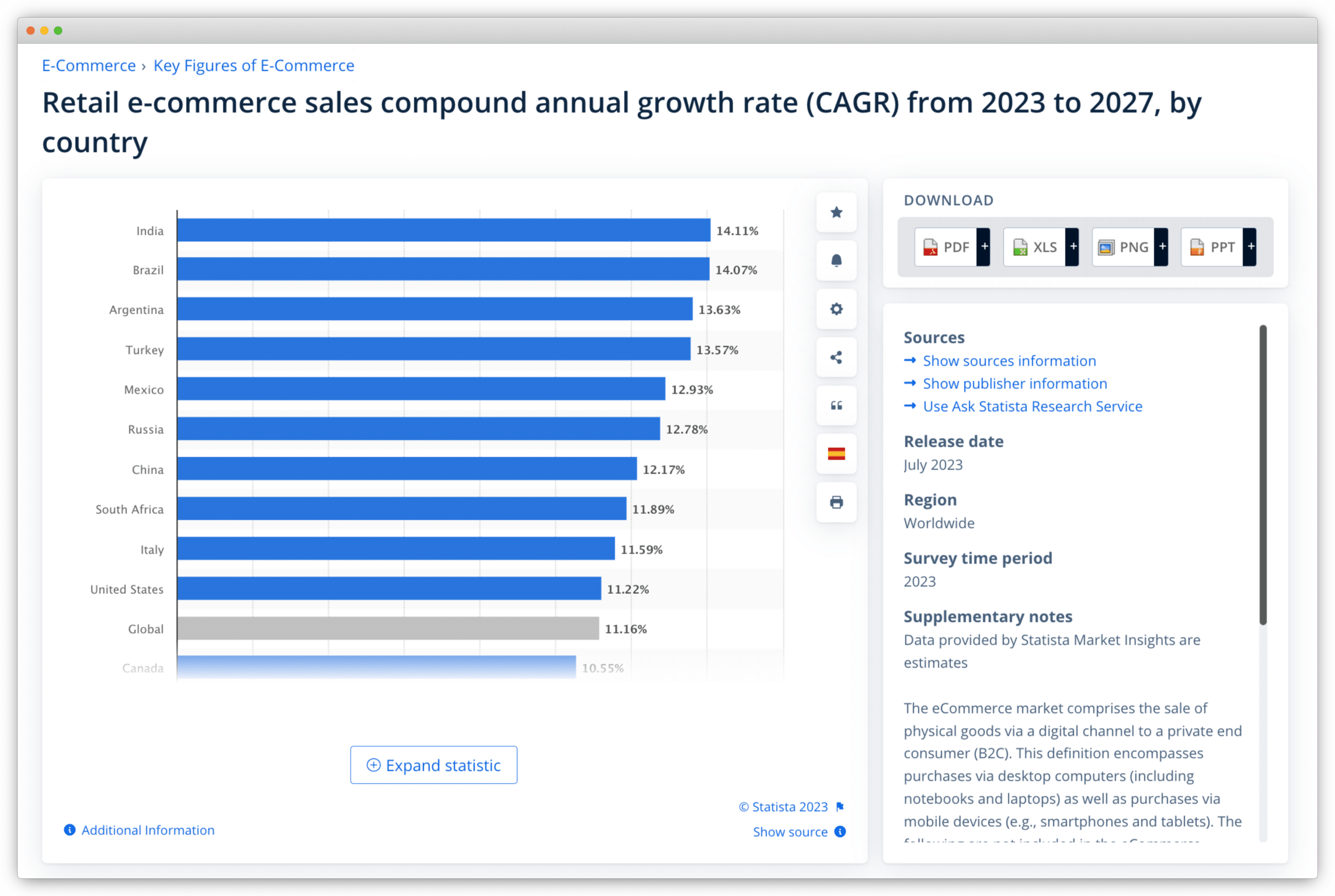
By adopting a well-designed order management process, enterprises can:
- Improve order accuracy: Effective order management reduces the potential for incorrect products or quantities, getting the right items to the right customers while minimizing returns or replacements.
- Accelerate order processing: Fixing order mistakes wastes valuable fulfillment and shipping time. The tighter an order management process, the faster orders can be processed and delivered.
- Streamline fulfillment processes: Optimizing inventory allocation, automating picking and packing, and coordinating shipping and logistics results in faster and more efficient order fulfillment.
- Enhance the customer experience: Customers expect their orders to arrive on time and in pristine condition. A wonderful order experience creates a positive association with your brand and encourages repeat purchases.
- Increase efficiency and cost savings: With intelligent order management, e-commerce enterprises can identify and close gaps in their fulfillment processes. They can also leverage the data they collect to learn about customer buying patterns and popular products to refine their go-to-market strategy.
Enterprise Order Management Software
Using an OMS that’s purpose-built for enterprise is the key to optimizing order management processes for complex retail operations. Below, we outline seven powerful order management platforms to consider.
fabric OMS
fabric OMS is built with the enterprise customer in mind. Recognized in the 2023 Gartner Peer Insights™ “Voice of the Customer” Report for Digital Commerce, fabric OMS stands as a cutting-edge distributed order management (DOM) solution designed to handle more complex omnichannel retail operations.
Through its centralized order processing, dynamic real-time inventory insights, and advanced order routing capabilities, it empowers businesses to seamlessly orchestrate orders across diverse channels. This versatility allows retailers to adopt various fulfillment models such as in-store fulfillment, buy-online-pickup-in-store (BOPIS), curbside pickup, and ship-to-store.
Additionally, fabric OMS is built on cutting-edge multitenant architecture, allowing SaaS customers to enjoy not only market-leading features and functions, but also huge economic benefits, such as lower costs, improved efficiency, and greater flexibility. Ultimately, fabric OMS transforms order management into a strategic advantage, enabling companies to greatly improve the order fulfillment experience for customers.
Fluent
Fluent Commerce is a leading OMS that automates order routing, inventory updates, and shipment tracking. The backend of Fluent’s platform has robust analytics and reporting capabilities, enabling operations teams to better understand inventory levels, overall performance, and customer behavior.
That said, Fluent can be overwhelming for companies without a dedicated e-commerce IT team. Users have noted that implementation or migration can turn into large, time-consuming projects because of Fluent’s limited out-of-the-box workflows and steep learning curve. Fluent Commerce is also not backed by an extensive commerce platform, requiring complex integrations with other solutions.
Newstore
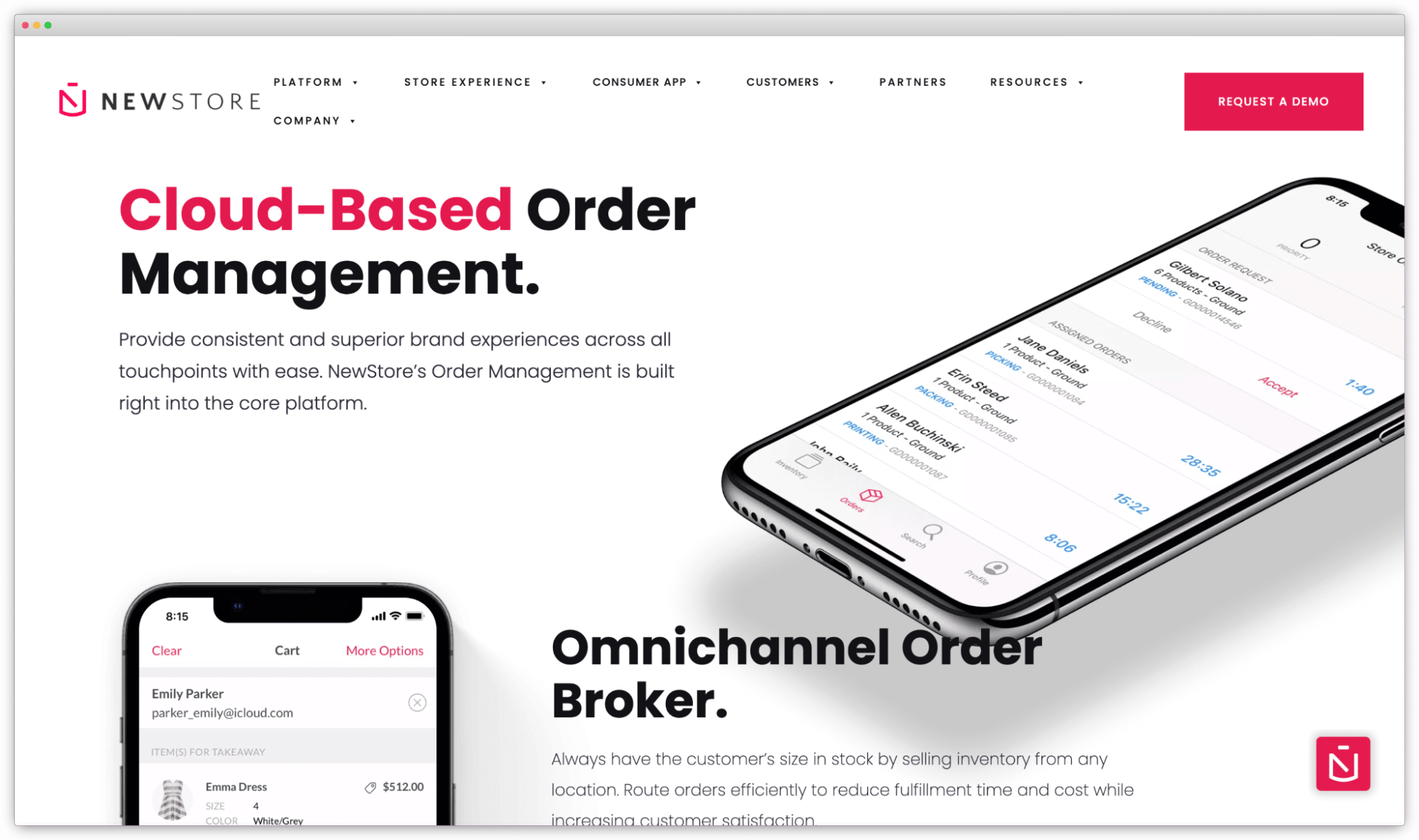
Newstore is a cloud-based order management system with a mobile-first approach. Enterprise-level users can apply rules-based configuration and item-level order routing depending on fulfillment capacity, item availability, and location, and customers can see their order and shipping status straight from the Newstore mobile app. Newstore also integrates with in-store technology to offer pickup in-store and optimize fulfillment requests based on staff availability.
Some Newstore users note that the system doesn’t make an opt-in data point available for them to communicate with and market to their customers. They also suggest working with an experienced implementation team. Newstore has a complicated installation process and may not cover all use cases for enterprises out of the box.
Blue Yonder
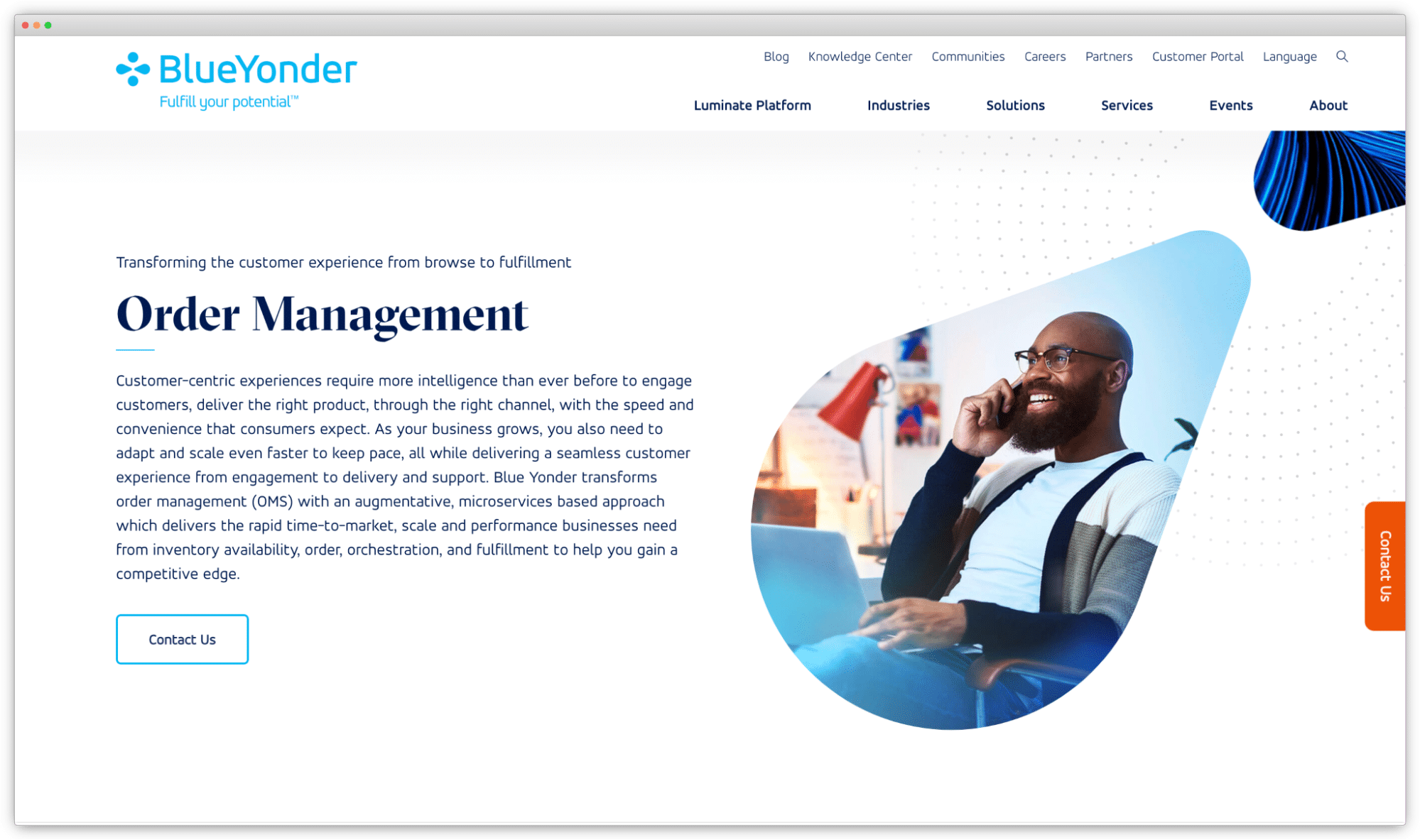
A subsidiary of Panasonic, Blue Yonder’s OMS takes an augmentative, microservices based approach which delivers the rapid time-to-market, scale and performance businesses need from inventory availability, order, orchestration, and fulfillment. It caters to the modern supply chain, helping companies manage day-to-day warehousing logistics. The company has invested heavily in artificial intelligence and machine learning, helping deliver a mostly autonomous supply chain.
Having said that, some Blue Yonder users have found their OMS to be expensive. They’ve also pointed out that the user interface could be redesigned to look more practical and user-friendly. New users might initially take some time to learn Blue Yonder’s end-to-end order management process, which can be complex.
Manhattan
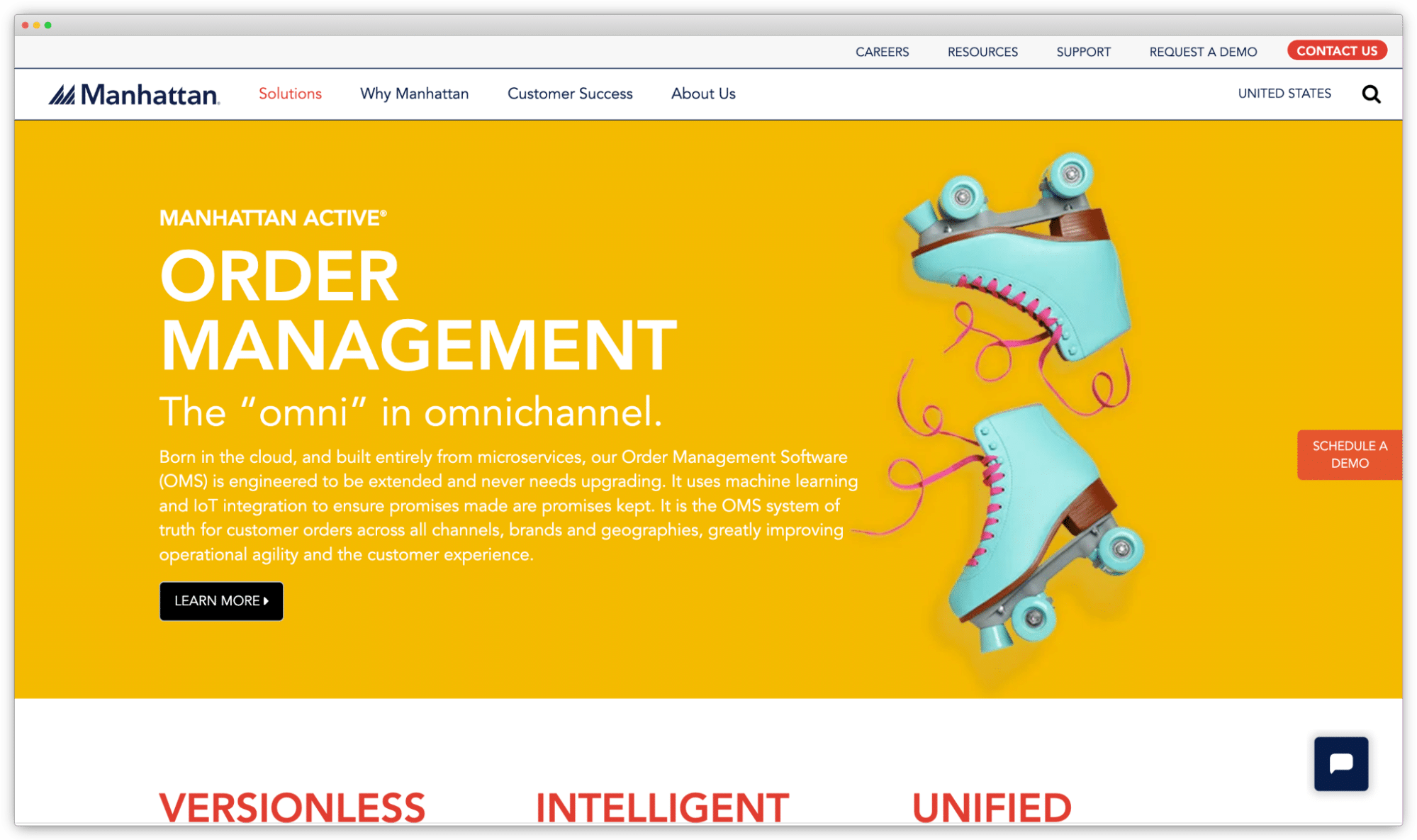
Manhattan OMS is a leader in omnichannel order management. It can serve as the central repository for all customer transactions, giving enterprise retailers a 360-degree view of their customer orders — online and in-store. With one system of truth, Manhattan OMS users can track orders across all channels, brands, and geographies and carefully orchestrate each step of the buyer journey.
Manhattan has also been known to “take a lot of care and feeding,” needing to be highly customized to each enterprise’s business mode—and modifications are pricey. Additionally, Manhattan is not backed by a comprehensive e-commerce platform. Overall, Manhattan is best suited to enterprises with big technology budgets and capable engineering teams.
Salesforce
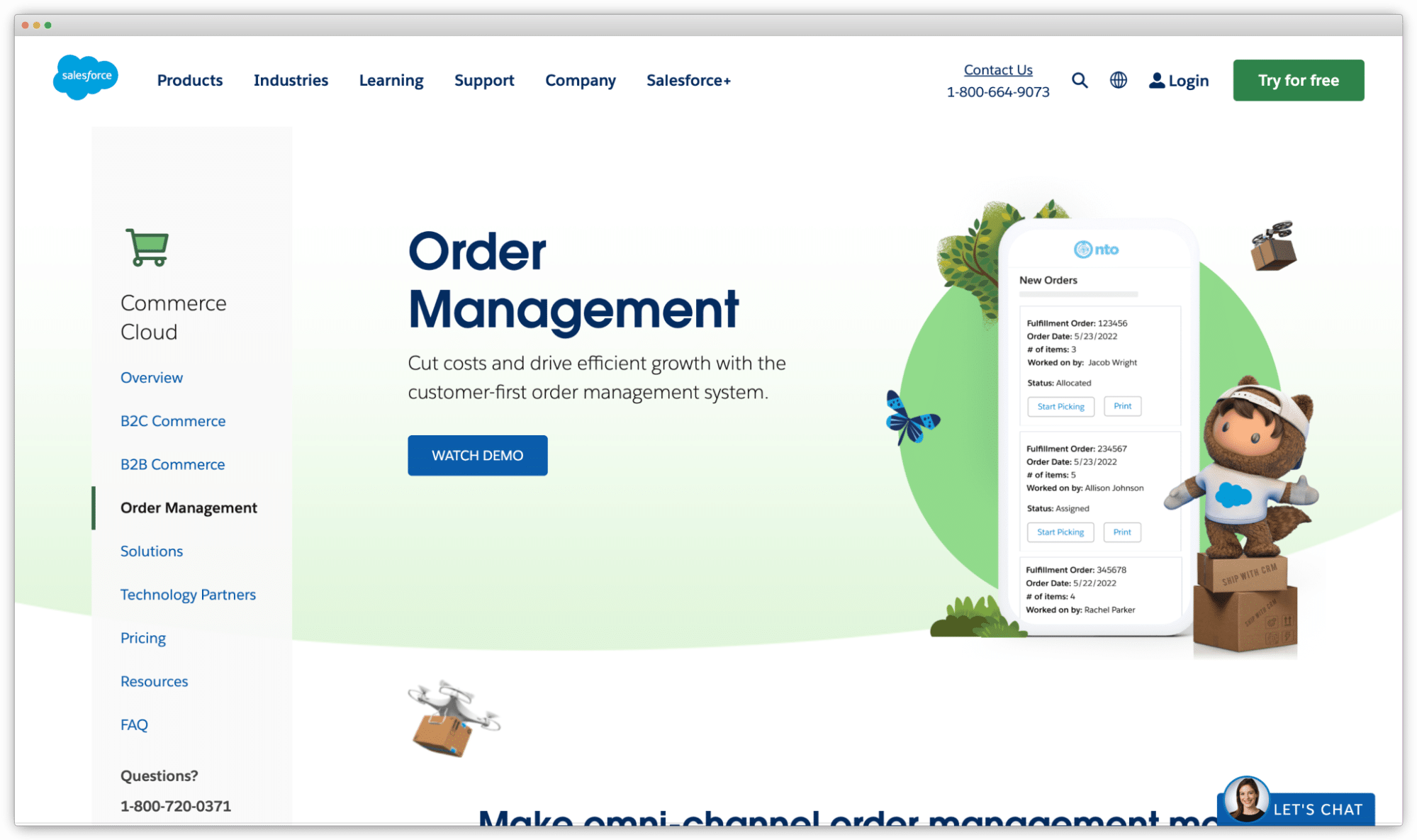
With Salesforce Order Management, enterprises can manage order fulfillment, shipping, payment capture, and invoicing with built-in AI and automation. Their OMS is also connected to Salesforce’s Service Cloud, giving agents access to a master repository of all order-related information whenever they engage with a customer.
But like other Salesforce products, order management offering can be unintuitive and may need additional coding to accommodate short shipments and split payments. Additionally, the OMS still requires some manual work to input data and update deal stages. Users can also often be highly dependent on implementation partners for upgrades and fixes.
IBM Sterling
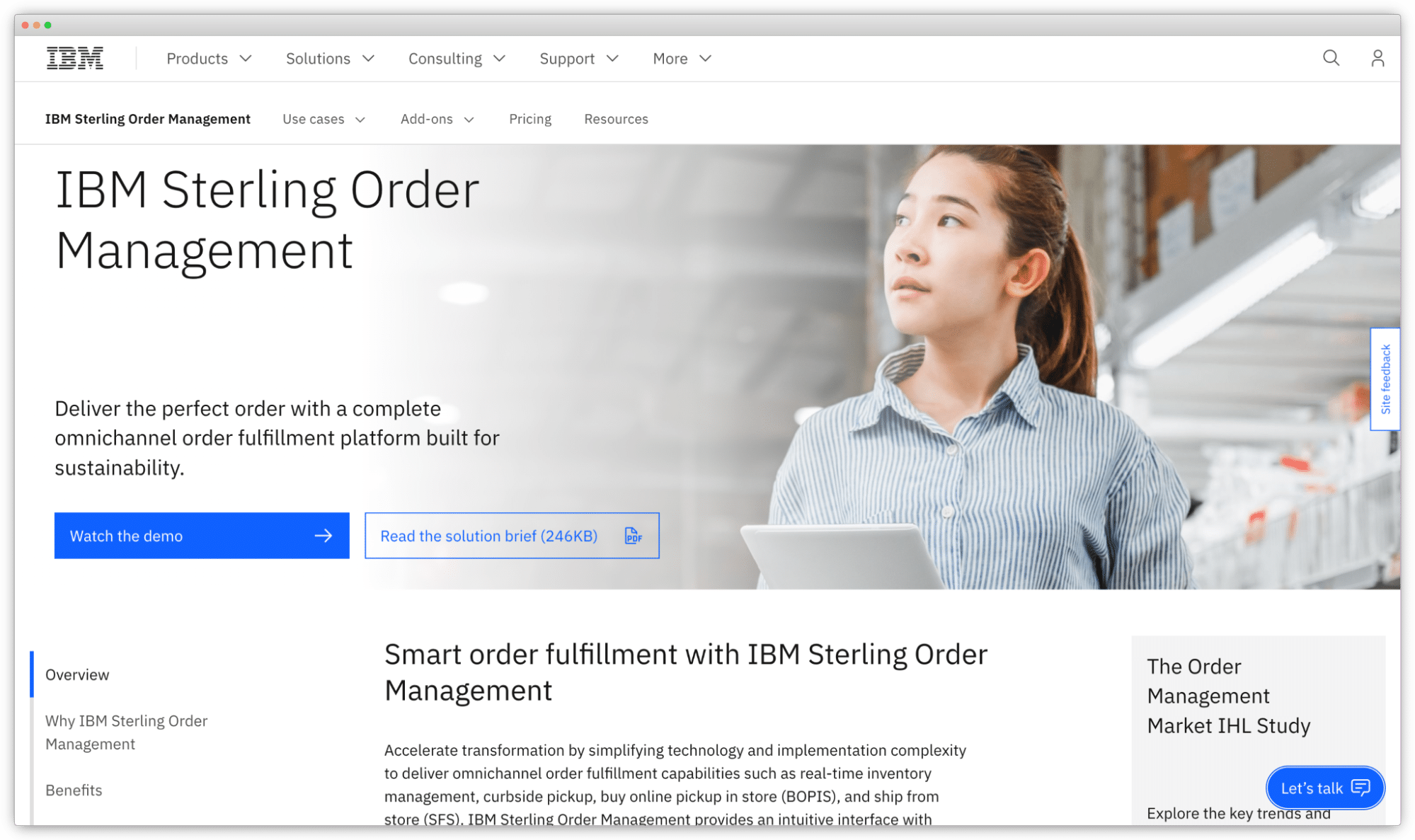
IBM Sterling offers a single view of demand, inventory, and supply across global networks. With its smart order fulfillment system, Sterling can intelligently broker orders on any channel, get a committed fulfillment promise, and track the order status. Because everything is connected, end customers can initiate order changes, rerouting, or returns without disrupting order flow.
IBM Sterling Order Management Software is delivered as an on-premise offering, which has its pros and cons. This can cause lags, slowing the system down—a significant issue in the case of very diverse and large inventory fulfillment networks. Product version upgrades are challenging, requiring the help of large development teams.
Best Practices for Effective Order Management
With the right framework in place, order management doesn’t have to be complex. Here are some best practices for optimizing order management processes:
1. Choose the right OMS with DOM capabilities
Weighing your needs against the pros and cons of each solution can help you select the right OMS to meet (or even exceed) your business goals. Considering an OMS with sophisticated distributed order management capabilities can help you minimize shipping times and lower your overall fulfillment costs with automated routing and processing.
2. Integrate with other systems and platforms
Enterprises tend to have legacy ERP systems and payment gateways that your OMS needs to be able to communicate with. A modular and scalable OMS solution allows you to support those connections and integrate with your CRM, e-commerce platform, and dropship marketplaces.
3. Achieve real-time inventory visibility and availability
Retailers need to be able to deliver on their promises to customers. Having accurate, up-to-date information of what is and what is not in stock across all sales channels and locations can help companies better estimate fulfillment times and provide accurate information on their websites and in order confirmation emails. Better visibility helps prevent stockouts or overstocks, and allows for efficient order allocation and fulfillment.
4. Implement advanced order routing
Advanced order routing systems can determine the most optimal fulfillment locations for orders based on factors such as proximity, inventory availability, and customer preferences. A DOM system will allow you to predefine business rules that intelligently direct orders to and from specific fulfillment locations. Order fulfillment logic, or logic-based rules, can ensure that orders are shipped from the most suitable locations, minimizing delivery times and costs.
5. Automate order management functions
Automating processes saves time and gets products to customers faster. For enterprise retailers, this efficiency boost allows you to redirect resources towards devising innovative marketing approaches that can enhance both your average order value and order size, leading to improved business performance.
6. Monitor and optimize processes
Regularly examining order data, operations KPIs, and customer satisfaction rates will pinpoint areas for improvement. This practice enables timely identification of areas that require enhancement, ensuring proactive measures are taken to maintain streamlined order management and sustained revenue growth.
fabric OMS is an Enterprise-Level Solution for Modern Order Management
To harness the growth opportunities in the retail sector, a modern order management solution is crucial. Without it, capitalizing on these prospects becomes challenging. Investing in an effective OMS will help battle rising order fulfillment costs while strengthening customer loyalty. But not just any OMS will do.
fabric OMS is a powerful application with advanced order lifecycle management, customizable inventory rules, and flexible fulfillment options that scale with your business. Packed with must-have features and capabilities, it features DOM and advanced order routing to streamline order fulfillment for enterprise retailers. Experience the power of fabric OMS by requesting a demo with our team today.
FAQ
What does an order management system do?
An order management system (OMS) is a software solution that helps businesses manage and track the entire lifecycle of customer orders, from placement to fulfillment, providing visibility and control over inventory, order processing, and fulfillment operations.
What are examples of order management systems?
Some examples of order management systems include fabric OMS, Manhattan Associates OMS, and IBM Sterling.
What is the difference between order management and order processing?
Order management refers to the end-to-end process of managing customer orders, including order placement, inventory management, and fulfillment, while order processing specifically refers to the steps involved in processing an order for fulfillment, such as picking, packing, and shipping.
How does order management impact customer satisfaction?
Effective order management ensures accurate and timely order fulfillment, reduces errors and delays, provides real-time order tracking, and offers flexible fulfillment options, all of which contribute to a positive customer experience.
What are the key benefits of an effective OMS?
Key benefits of an effective OMS include improved order accuracy, increased efficiency in order processing and fulfillment, streamlined inventory management, enhanced customer service, and better visibility into order status and inventory availability.
How can data be leveraged to optimize order management processes?
Data analytics and insights can identify trends, optimize inventory levels, predict demand, improve order routing and fulfillment strategies, and personalize the customer experience based on past purchasing behaviors.
What are some best practices for effective order management?
Best practices for effective order management include selecting an OMS with DOM capabilities, simplifying integrations with an API-first modular system, standardizing and automating order management processes, and monitoring KPIs and optimizing systems as needed.
Digital content editorial team @ fabric.
